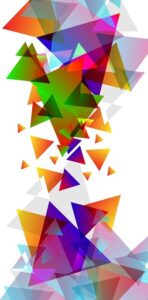“There are not more than five musical notes, yet the combinations of these five give rise to more melodies than can ever be heard. There are not more than five primary colors, yet in combination they produce more hues than can ever been seen. There are not more than five cardinal tastes, yet combinations of them yield more flavors than can ever be tasted.” – Sun Tzu, The Art of War
Welcome to the distributed (hybrid remote/in-person) world, where we must collaborate on a different level than ever before. In this new environment where physical presence is often the exception rather than the norm, our team characteristics are now different. We have to learn to operate as a carefully integrated formation of contributors – the “Mosaic Team.” 
The term “mosaic” has several meanings, but in a team context it refers to the skillful organization and operation of a group of diverse individuals to achieve a common goal. Just as a mosaic art piece is made of different colored tiles, a mosaic team combines various strengths and perspectives to be successful.
What’s different about the “Mosaic Team” (MT) from any others we’ve seen in the past? There are indeed a number of key differences, a few of which I’ll highlight here:
- The “Mosaic Team” requires constant care and feeding: Because the members will often be physically separated, they must have the ability to collaborate from anywhere. That’s very different from our traditional models where we gathered the team in one place at set times and shared our work. Now we have to have near-constant situational awareness of what the team is doing.
- The “Mosaic Team” has to leverage much more information: With the newly discovered power of generated Artificial Intelligence, our mosaic teams may have access to vast amounts of information in almost real-time. The MT leaders must understand and direct the team’s use of this information to maximize its value.
- The “Mosaic Team” must be carefully assembled and thoughtfully coached: The new teams we assemble will only be as successful as their talents are integrated and developed by their leaders. Focused team selection and assignment will be key demands required of our senior leadership. As Jim Collins wrote in his 2001 book on leadership, it’s more important than ever to get the “right people in the right seats on the right bus.” MT leaders will have to be constantly coaching the team, actively listening and sharing knowledge.
In essence, we have to redefine what high performing teams look like and how they operate. Rather than simply gathering a group of individuals and giving them a collective goal, we as successful leaders must make “mosaic team” recruiting, assembling, directing, and resourcing our top priority. If we don’t, our competitors will.
Enjoy the journey!
Did you find this blog post beneficial? If so, please consider sharing it with your audience. It’ll just take a second, but could improve someone’s work habits for a long time to come.





